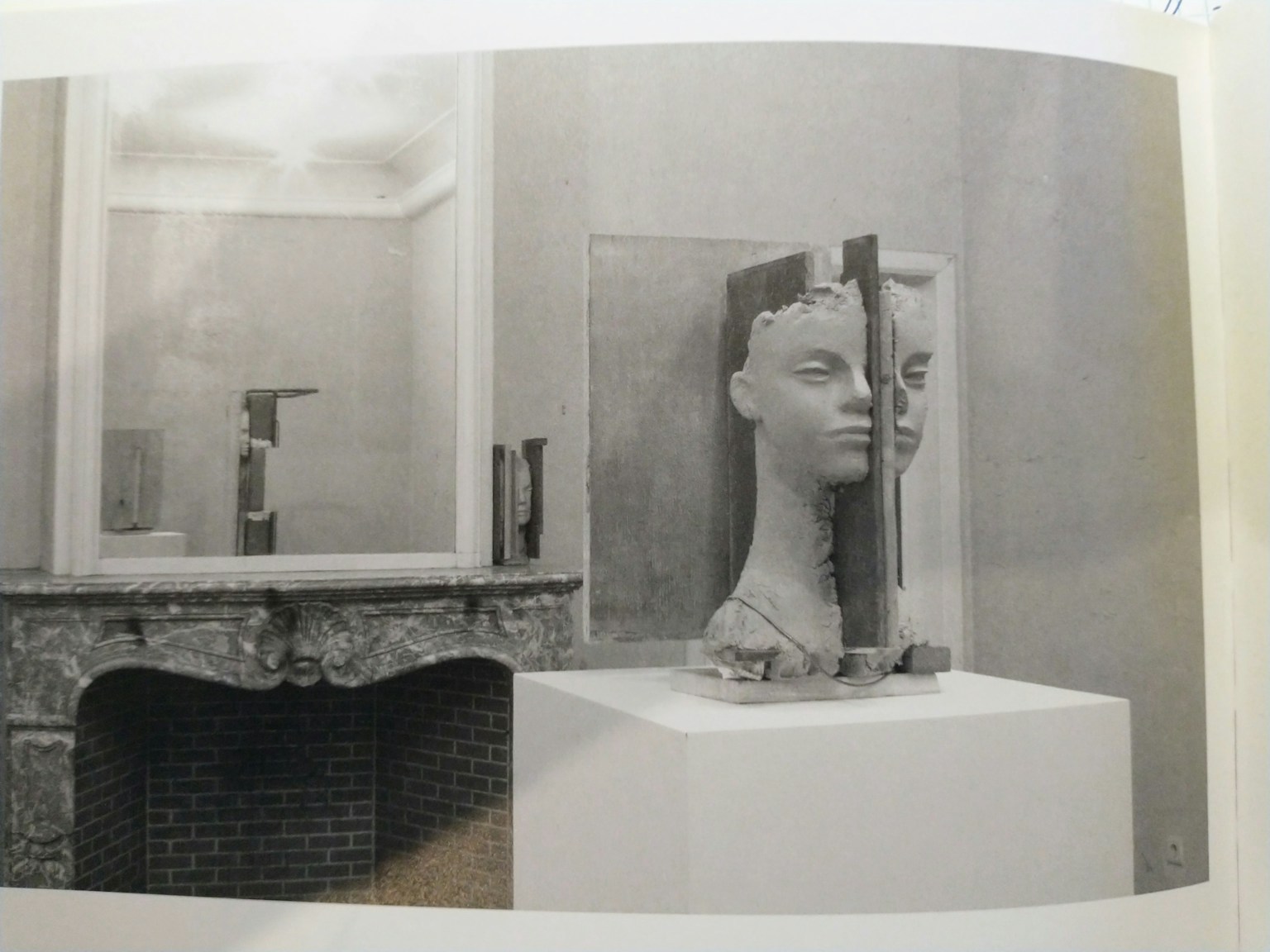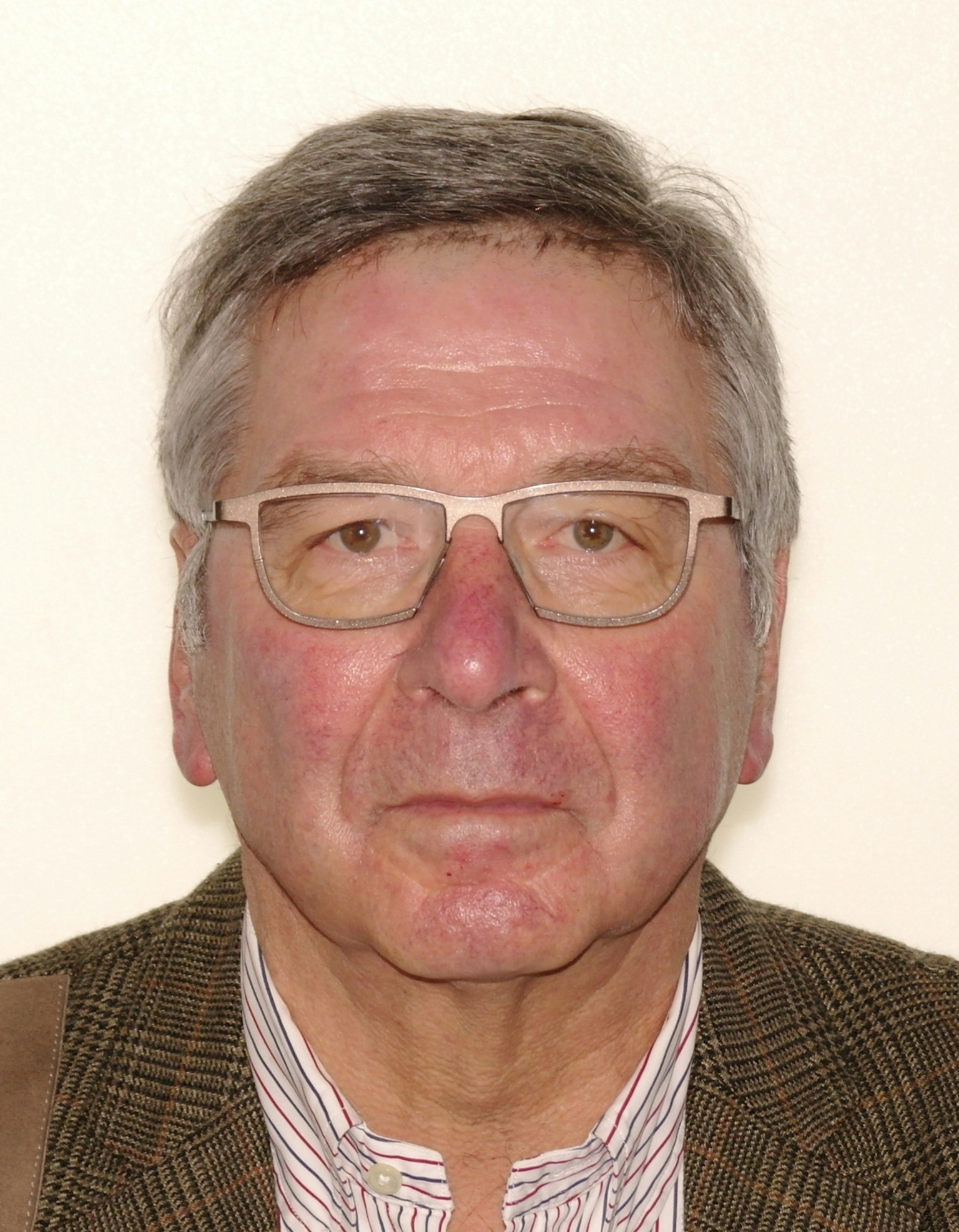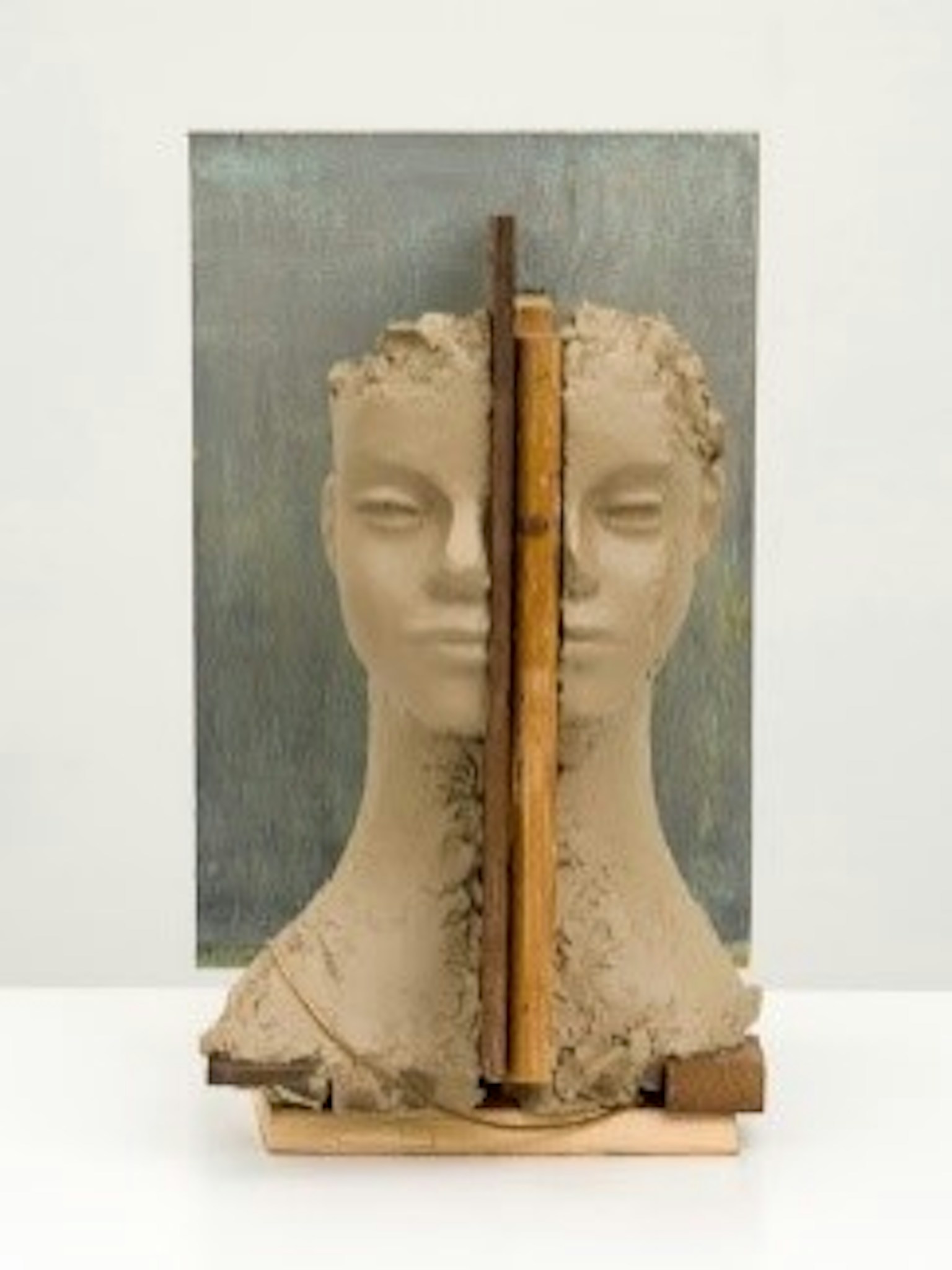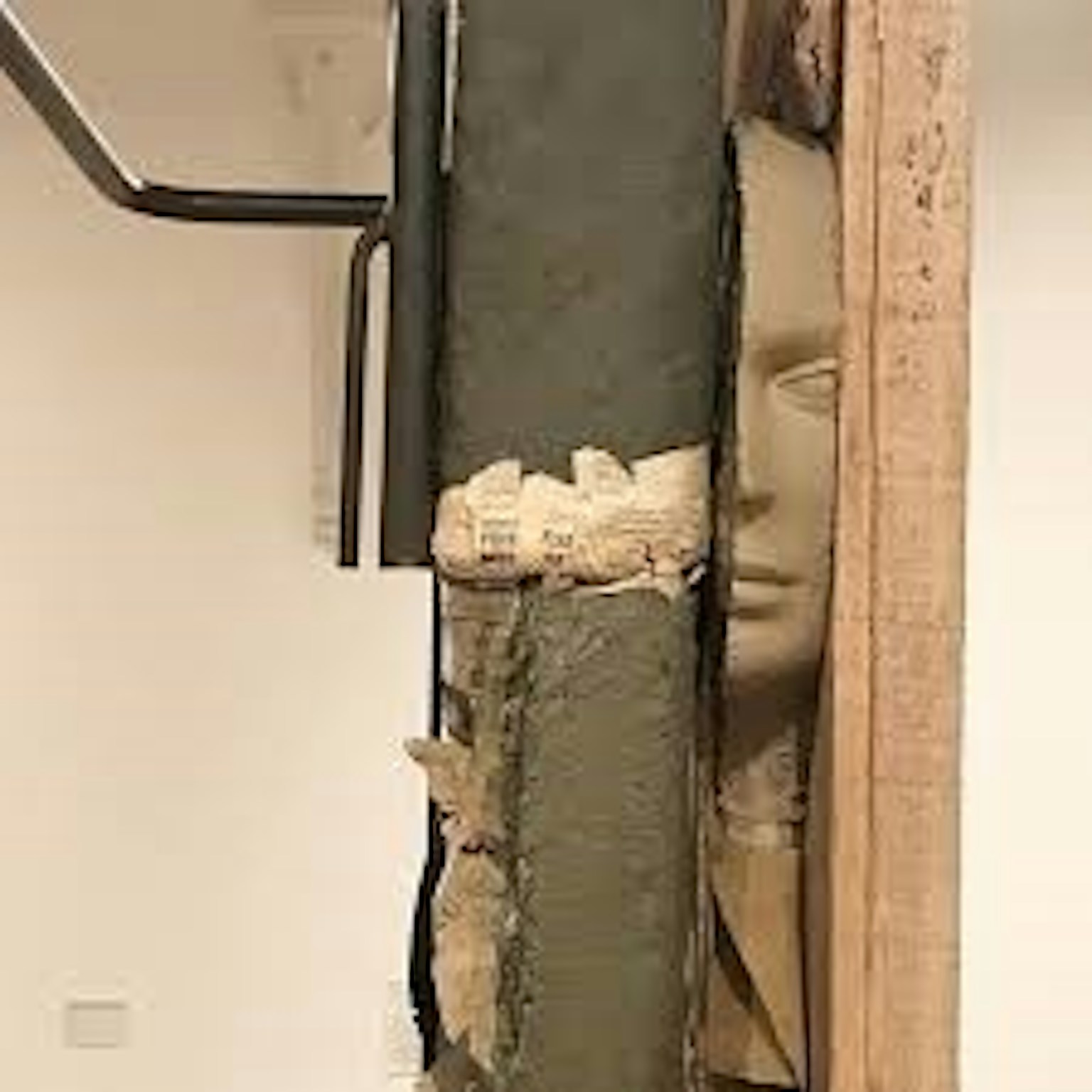Our group visits still cannot be restarted. Fortunately, we can continue to count on our guides. These fascinating storytellers also guide you into the museum via the digital route. Today, our guide is Jo. Vandevelde.
Duality
When I read recently that the Zeno X gallery was organising a Mark Manders exhibition, my mind automatically wound back to TRACK (2012), the follow-up to what became the world-famous Chambres d’amis, but also to Over the Edges. TRACK was organised by Philippe Van Cauteren and Mirjam Varadinis. I was guiding a coachload of visitors along the Tolhuis route: we’d just left the Voortman house, where works by Mark Manders were on display, but I also wanted to allow them a brief stop-off at the Dampoort turning basin so they could see a work by Tadashi Kawamata, Favela for Ghent. We drew to a halt at the traffic lights on the Hagelandkaai and the visitors clambered out of the coach. At that moment, the car in front of us rolled back and the ball of its tow bar bored into the bumper of our vehicle. There was great consternation from our driver, especially when we saw the female driver of the car quickly swap places with her male partner. The latter insisted that it was not his car that had rolled backwards, but our coach that had moved forwards.
At that moment, Mark Manders’ sculptures, which we had just seen, popped into my head. Especially the head of a girl (or is it a boy or X-gender person?) bisected by planks, or perhaps trapped between them. These sculptures always remind me of bookends, and everything they might contain.
The head is split, or if you prefer caught, hemmed in by planks (like books, or by extension ideas, opinions, preconceptions, etc.) or bisected by them (imprisoned, censored). Ideas are captured or severed, so they are only able to half-form, like when a journalist interrupts the discourse of an interviewee in order to put their own viewpoint across. Every door has two sides: the one you pass when you exit, and the one you pass when you enter. Both sides are part of a single entity but can be very different. We noticed this recently when we were able to leave one country but were not allowed to enter the neighbouring one. This dual stratification is in all of us, and is of all times.
The same duality is also found in Mark Manders’ work. This head, and Manders’ oeuvre in general, also articulates a certain morbidity. There seems to be something alive beneath this apparently lifeless shell. The artist is passionate about still lifes. That is what I see in this work too; it is at once a still life and a nature-morte. But it feels as though these inert beings could be brought back to life at any moment. That’s also why Manders’ work is so surprising; it inspires restlessness.
The material – the use of clay (painted over the epoxy) and wood – also suggests the passage of time. Manders’ work is both timeless and yet contemporary. It is alienating, yet close to us.
It exudes loneliness and melancholy. There is something vulnerable about it.
Jo. Vandevelde
Jo. Vandevelde is a tour guide in Italy and Canada, as well as a city and museum guide.
GROUP VISITS
We hope to allow group visits again but this is subject to what the National Security Council will decide in the future.
Through this link you will find all information.


















